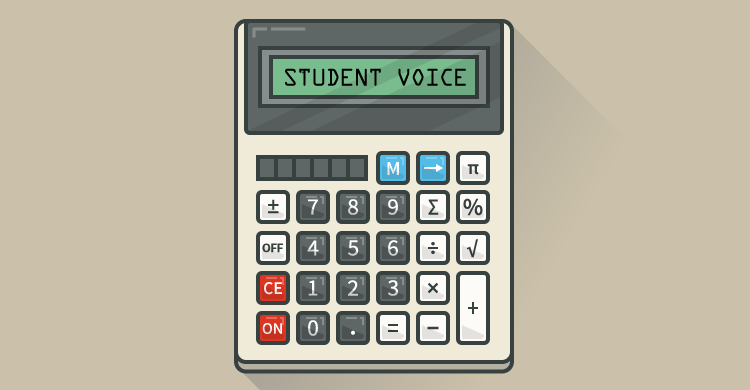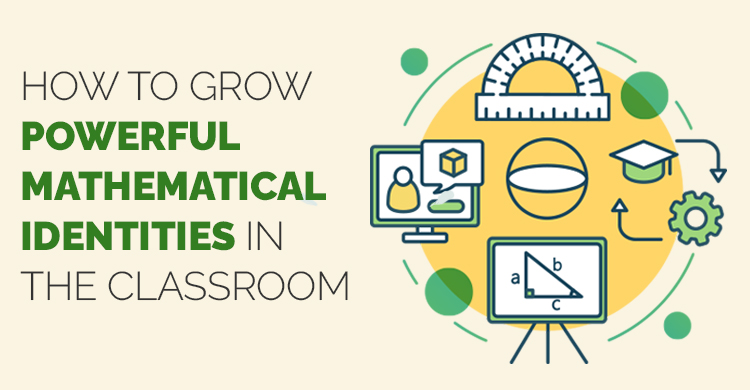In mathematics classrooms all over North America, teachers and leaders are engaged in an alarming number of mathematics education reform initiatives. Teacher teams and curriculum offices are busy unpacking new standards, working to make sense of evolving assessment systems, grappling with the mechanics of teacher evaluation, and norming expectations for exemplary teaching and learning.
One interesting side effect of reform efforts is a dramatic shift in focus for clinical observations of mathematics lessons. Administrators conducting classroom observations are focusing more and more on the actions of student rather than the actions of teacher. During post-observation conferences, principals are assuming a coaching stance when comparing student evidence to the intended actions outlined in the written lesson plan. National frameworks support these shifts, valuing the student voice and responsibility in day-to-day learning. In her popular framework for instructional improvement, Charlotte Danielson reserves “Distinguished” practice for teachers who are able to create a culture that empowers students as equal learning partners. (Danielson, 2013) In the mathematics classroom, the Common Core’s Standards for Mathematical Practices (CCSS, 2010) define a set of desired student mathematical learning behaviors. Administrators capture evidence of students engaged in these practices as one measure of lesson effectiveness. With an unprecedented focus on student actions, the question becomes, “What might students have to say about reform efforts effecting the mathematics classroom?” In this blog, I want to share ideas designed to help you empower your students as a catalyst for improving mathematics teaching and learning.
Strategies for Implementation: Activating the Student Voice
I think we would all agree that it would be a gross understatement to refer to students as merely “valued members of our mathematics community”. And yet, I have found that students are treated more as “customers” rather than the “valued members”. Over the past three years, the Howard County Public School System Secondary Math Office has been obsessed with the learning and growing through our “student’s voice.” We began by asking ourselves, “What might we learn from our students if we asked focused questions AND listened carefully to their responses?” Those answers to those two questions lead to a series of events that transformed the actions of our team.
Each year, we work with schools to conduct student interviews. I’d like to describe the processes we used to conduct the interview, share student feedback, and summarize lesson learned. It is my goal to compel you and your team to replicate these processes to gather new perspectives on the mathematics classroom experience.
First, we partner with a local school and identify 10 students from each grade level. The students selected represent each mathematics teacher as well as the full range of mathematics courses offered at the school. We want to hear from students for whom the current system is working well as well as from those students for whom the system is failing. Each math office team member partners with a school administrator to conduct the student interviews. The math office team member asks the questions as the school administrator collects data. The following questions were posed to groups of 10 students during a 50-minute period:
- Describe your elementary, middle, and high school mathematics experience. What were some of the highlights of those experiences? What were some of the frustrations?
- Describe a time when you enjoyed learning something new. (in any setting) How did you feel during that experience? Describe a time when you felt the same way in a math classroom.
- What is one piece of advice you would offer to improve the quality of your mathematics classroom experience?
As you can imagine, we collect an amazing set of data that reflects a wide range of experiences, opinions, and emotions. At the end of the day, the interview team meets to analyze the data. We select four pieces of data that represent opportunities for instructional growth.
Here is an example of four pieces of data selected at one school:
- “It is more important to figure out how to please the teacher than it is to learn the math.” (Affirmed by 18 of 40 students)
- “My 6th grade teacher told me I’d be lucky to balance a check book. That really stuck with me. I’m taking Pre-Calculus as a senior but I really think I would have made different decisions if that teacher would not have said that. I really would have liked to have tried AP Calculus.”
- “I have two different math courses this year. In one class, my teacher really does everything she can to try to figure out how I learn best. She is very different than any teacher I have had in math. My other teacher could care less about how I learn. She is more typical.”
- “If I can’t tell a teacher cares about me in the first two weeks, I’m pretty much going to fail for the year.”
In addition to these four quotes, we also learned, almost immediately, that students feel that school is a sort of game and, if you learn to play certain parts of the game well, you are much more likely to succeed…. even if you don’t really understand the content. Those who were struggling in school also knew that school was a sort of game. Many of those students reported that they were frustrated by this revelation and chose to disengage rather that conform, as one student put it, “to the sham that is public education.”
After synthesizing the data, the school leadership team meets to determine next steps. In most cases (if the team of teachers is operating in a positive state of readiness) the leadership team works with the math teaching team to identify common themes evident from the data. Once clear themes emerge, all stakeholders determine how the annual school improvement plan might include action steps focused on student-led classroom improvement. For example, the school whose data is featured above agreed to work to improve the hope, well-being, and engagement of the mathematics students. They agreed to conduct quarterly surveys of student perceptions, promising to listen carefully and to respond appropriately based on the results. This team, like others engaged in transition to Common Core, also needed support with comprehending standards, developing common assessments, and balancing conceptual understanding for procedural fluency. And yet, the whole team decided that those efforts would not result in improvement if the student classroom experience failed to improve. For our math office team, it was a powerful illustration of how the student’s voice served to initiate a substantive change in classroom practice.
Learning from Students
Our math office team continues to routinely engage students in meaningful conversations about mathematics instruction. We are continually tweaking our set of questions to satisfy our expanding curiosity about the student experience. The level of sophistication and awareness of student responses results in a constant state of “awakening “for our team. We each thought that we had listened carefully to students throughout our careers. However, we now characterize our student interactions in one of two ways; “Talking TO Students” OR “Talking WITH Students.” When you talk WITH students, you pose questions with the understanding that student responses will teach you something about the mathematics learning process. You talk WITH students to learn how to better serve them. And, as you talk WITH students, you begin to regard them as experts in, not just valued members of, our mathematics community.
Our team is working to involve students in every aspect of our operation. Here is a quick list of things we learned so far…
- Students have a real interest in being part of the curriculum and resource development teams.
- Panels of students are an incredible to launch new teacher orientation sessions.
- Students add substance as members of board policy committees.
- Students are effective agents of change.
I challenge you to take a break myriad of reform initiatives in your school or district. The perfect remedy for initiative fatigue is a dose of reality offered by the people who matter most. If you are unsure of how to engage your math team in effective improvement efforts, just ask your students.
NOTE: This post is a revised version of a post previously published on NCSM’s PRIMEd Principal Blog Series in November 2014.
[author_bio id=”45″]






